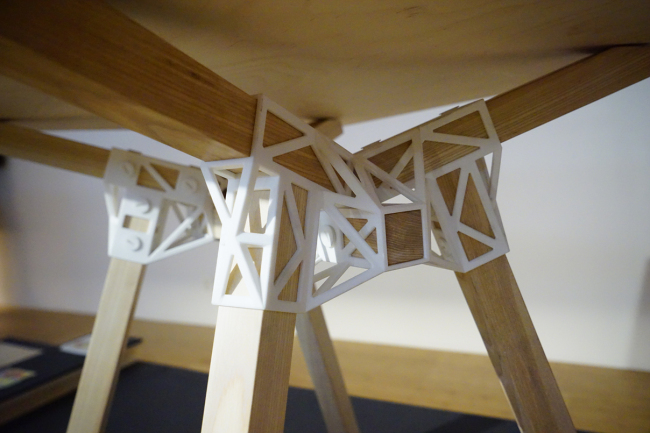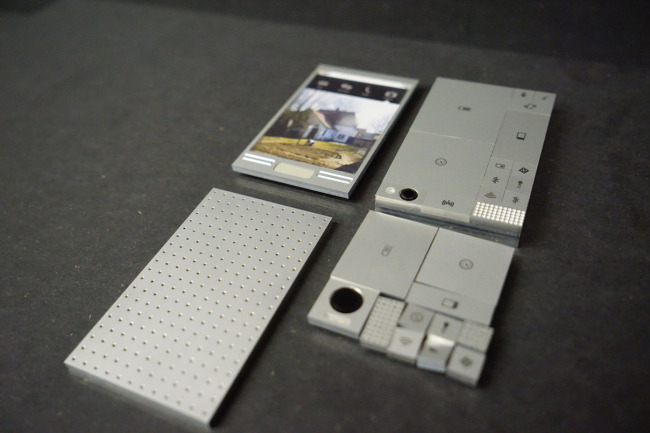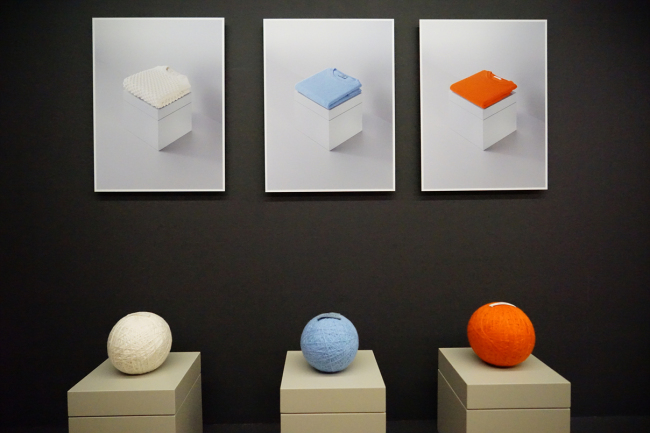Using 3-D printing technology, Dutch design studio Minale-Maeda has designed a set of plastic connectors that make it possible to assemble your own wooden furniture. Without using any tools, the connectors can be used to join wooden legs and a wooden tabletop to make a functional table.
The design studio has gone a step further by disclosing the blueprint for the connector so that anyone can make one with a 3-D printer.
 |
A 3-D-printed connector for the wooden legs of a table by Minale-Maeda |
The table assembled with the connectors is one of the eye-catching Dutch design products currently on display at Dongdaemun Design Plaza in Seoul. The exhibition introduces innovative works by 15 finalists of the annual Dutch Design Awards held in the Netherlands. After being showcased in Eindhoven, the exhibition has moved to Seoul to offer a fresh Dutch perspective of design.
“Dutch design is focused on form and functionality. It has a clear view of what people really need when using products,” said Bram Burger of LA Bolleur, which is in charge of organizing and designing the exhibition.
The exhibition is intended to promote Dutch designs globally. On display are innovative and creative works by individual designers, fashion houses such as Viktor&Rolf and big companies like the exhibition sponsor Philips.
Impressive design ideas have come from young individual designers who have made recycling a key theme of their works.
Designer Dave Hakkens has presented a Lego-like mobile phone, which consists of small blocks. On each block are symbols of components such as Wi-Fi, Bluetooth, battery and antenna. The mobile phone is eco-friendly because users can replace or upgrade blocks with new ones rather than throwing the whole phone away to buy a new one.
 |
A Phoneblocks mobile phone made of components from old mobile phones by Dave Hakkens |
“It’s not one big block that makes up the phone, but replaceable different parts come together to make this phone,” said Burger.
A video about the phone made by the designer went viral last year, attracting 1 million views on YouTube in its first 24 hours online.
Meanwhile, Dutch fashion and accessory designers have bucked fast fashion by using used materials.
Designer Sander Wassink collected materials from fake-brand shoes made in China and developing countries and remade shoes with the collected materials. Displayed next to the shoes are the steps to remake shoes using old shoes parts.
 |
Yarn balls made of knitting threads from last season’s sweaters (Dutch Design Awards) |
Designers have also exhibited yarn balls made with threads of sweaters worn last year as a symbolic protest against fast fashion. A video shows designers pulling out threads from sweaters and making a ball of wool again. The only evidence that the yarns were used to make sweaters are the clothes labels.
The exhibition is running at DesignLab 2, near Entrance D5 of Dongdaemun Design Plaza, until Nov. 10. For more information, visit www.ddp.or.kr.
By Lee Woo-young (
wylee@heraldcorp.com)










